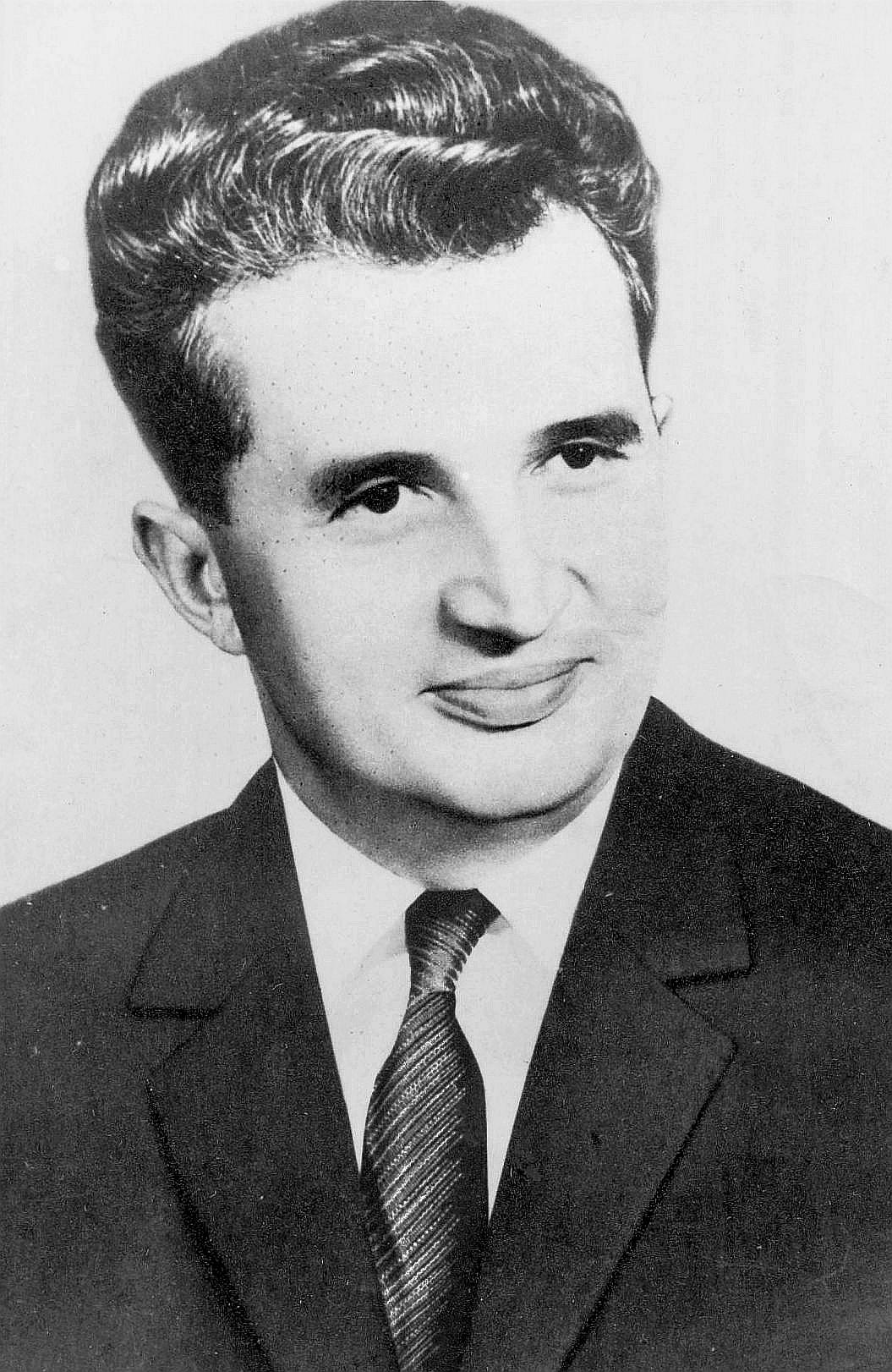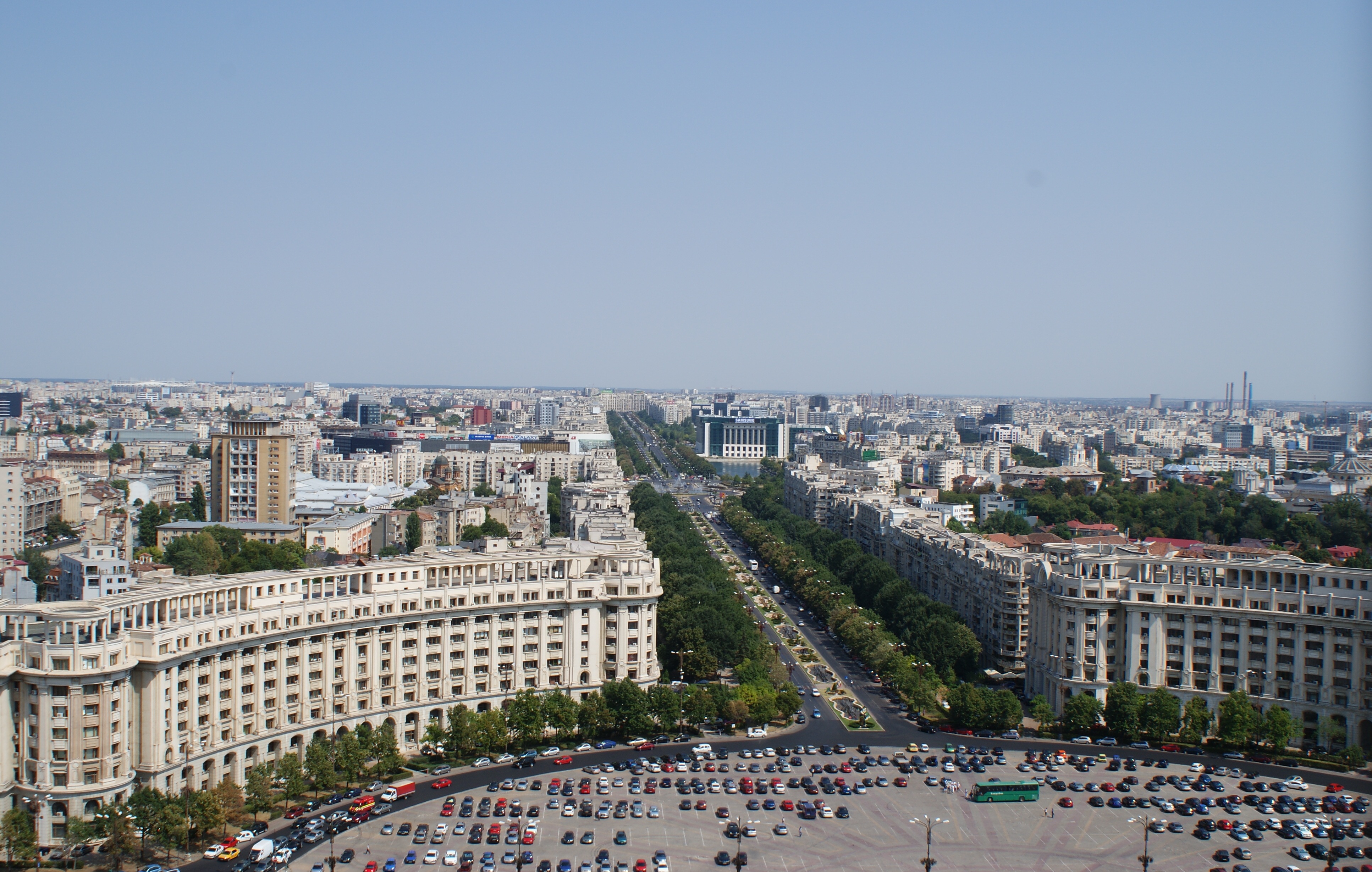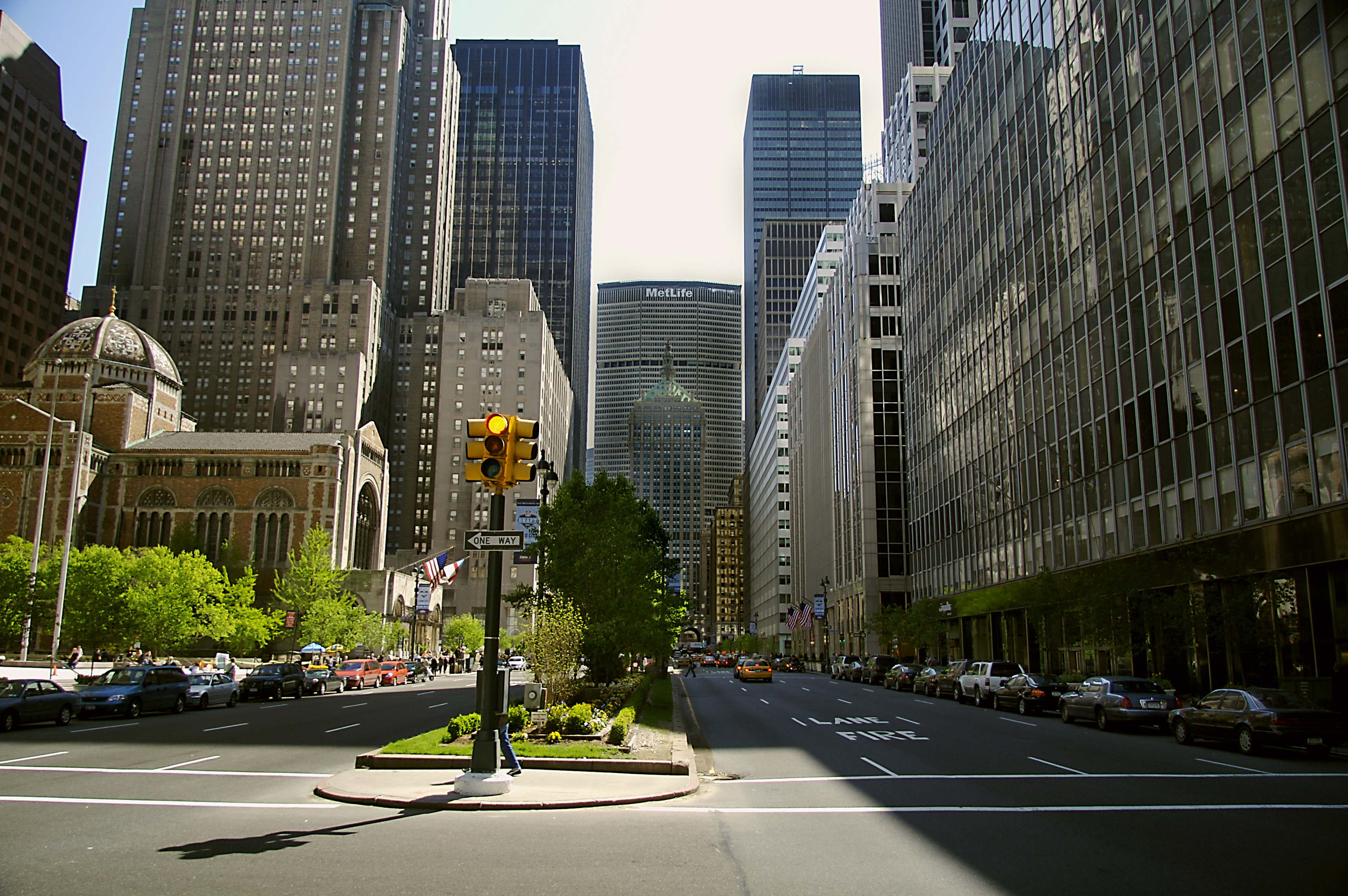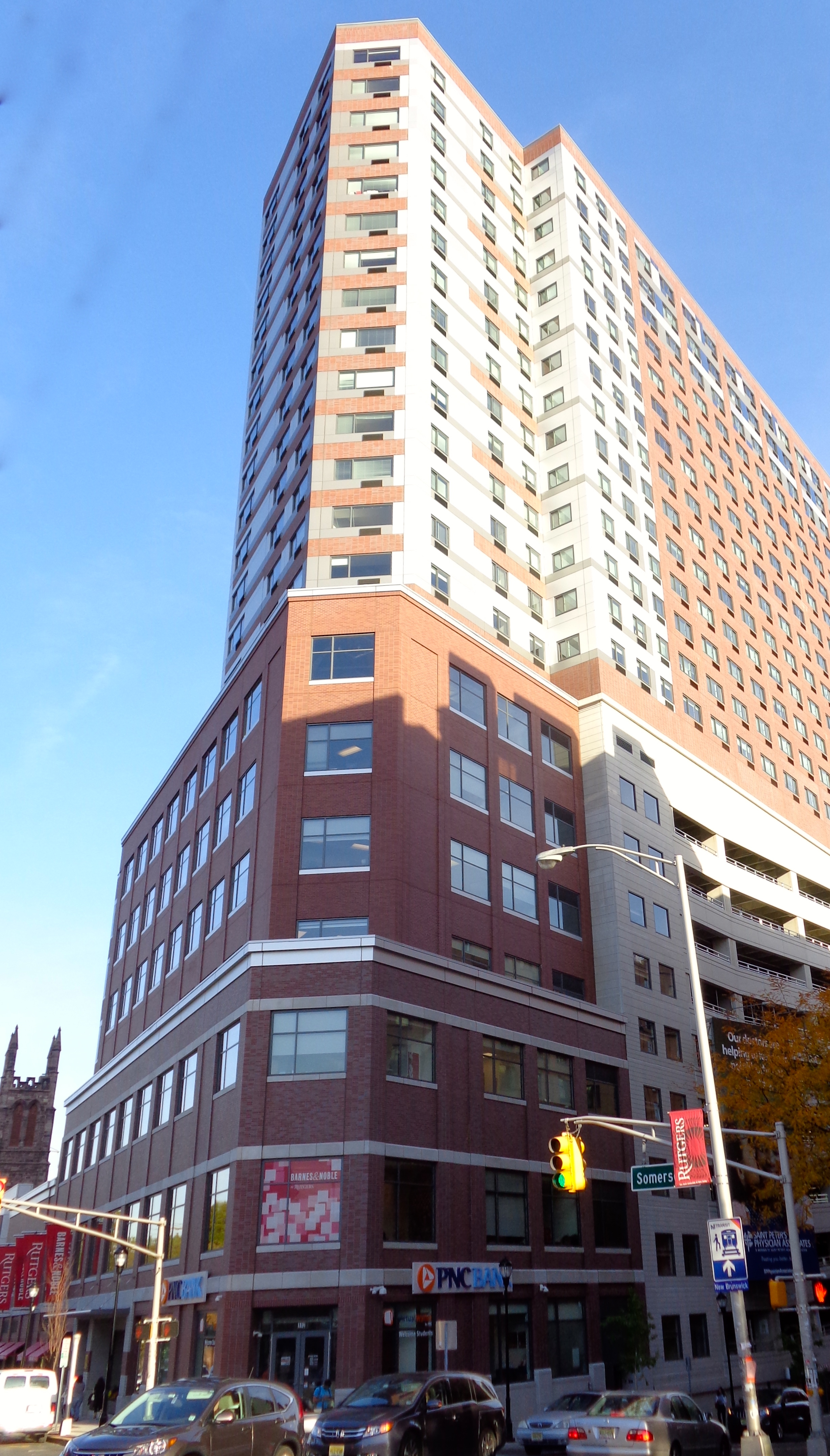|
Systematization (Romania)
Systematization ( ro, Sistematizarea) in Romania was a program of urban planning carried out by the Romanian Communist Party under the leadership of Nicolae Ceaușescu. Ceaușescu was impressed by the ideological mobilization and mass adulation of North Korea under its Juche ideology during his East Asia visit in 1971, and issued the July Theses shortly afterwards. Beginning in 1974, systematization consisted largely of the demolition and reconstruction of existing hamlets, villages, towns, and cities, in whole or in part, with the stated goal of turning Romania into a "multilaterally developed socialist society". Reconstruction of rural areas Systematization began as a programme of rural resettlement. The original plan was to bring the advantages of the modern age to the Romanian countryside. For some years, rural Romanians had been migrating to the cities (including Ceaușescu himself). Systematization called for doubling the number of Romanian cities by 1990. Hundreds ... [...More Info...] [...Related Items...] OR: [Wikipedia] [Google] [Baidu] |
Romania
Romania ( ; ro, România ) is a country located at the crossroads of Central Europe, Central, Eastern Europe, Eastern, and Southeast Europe, Southeastern Europe. It borders Bulgaria to the south, Ukraine to the north, Hungary to the west, Serbia to the southwest, Moldova to the east, and the Black Sea to the southeast. It has a predominantly Temperate climate, temperate-continental climate, and an area of , with a population of around 19 million. Romania is the List of European countries by area, twelfth-largest country in Europe and the List of European Union member states by population, sixth-most populous member state of the European Union. Its capital and largest city is Bucharest, followed by Iași, Cluj-Napoca, Timișoara, Constanța, Craiova, Brașov, and Galați. The Danube, Europe's second-longest river, rises in Germany's Black Forest and flows in a southeasterly direction for , before emptying into Romania's Danube Delta. The Carpathian Mountains, which cross Roma ... [...More Info...] [...Related Items...] OR: [Wikipedia] [Google] [Baidu] |
Scornicești
Scornicești () is a town in Olt County, Romania, with a population of 11,766. The town administers 13 villages (Bălțați, Bircii, Chițeasca, Constantinești, Jitaru, Mărgineni-Slobozia, Mihăilești-Popești, Mogoșești, Negreni, Piscani, Rusciori, Șuica and Teiuș) and has a total area of 170 km² (65 sq. mi.), being the locality with the largest area in the county of Olt, surpassing even its capital Slatina. Scornicești is situated in the historical region of Muntenia. It officially became a town in 1989, as a result of the Romanian rural systematization program. History Scornicești was the birthplace of communist leader Nicolae Ceaușescu, who lived there until the age of 11, when he left for Bucharest to become a shoemaker. During his dictatorship, Ceaușescu wanted to make Scornicești a "model town" to house the newly created " Socialist Man". Consequently, in 1988, he began his plan by demolishing the traditional village houses and replacing them with apar ... [...More Info...] [...Related Items...] OR: [Wikipedia] [Google] [Baidu] |
Palace Of Parliament
The Palace of the Parliament ( ro, Palatul Parlamentului), also known as the Republic's House () or People's House/People's Palace (), is the seat of the Parliament of Romania, located atop Dealul Spirii in Bucharest, the national capital. The Palace reaches a height of , has a floor area of and a volume of . The Palace of the Parliament is the heaviest building in the world, weighing about , also being the second largest administrative building in the world. (The Great Pyramid of Giza is about 50% heavier.) The building was designed and supervised by chief architect Anca Petrescu, with a team of approximately 700 architects, and constructed over a period of 13 years (1984–97) in Socialist realist and modernist Neoclassical architectural forms and styles, with socialist realism in mind. The Palace was ordered by Nicolae Ceaușescu (1918–1989), the president of Communist Romania and the second of two long-ruling heads of state in the country since World War II, d ... [...More Info...] [...Related Items...] OR: [Wikipedia] [Google] [Baidu] |
Centrul Civic
Centrul Civic (, ''the Civic Centre'') is a district in central Bucharest, Romania, which was completely rebuilt in the 1980s as part of the scheme of systematization under the dictator Nicolae Ceaușescu, which included the construction of new civic centres in the Romanian cities. Bucharest Civic Centre was planned to become the new political-administrative center of Communist Romania. History Bucharest suffered significant damage due to Allied bombing during World War II and the devastating earthquake of March 4, 1977. However, neither of these events changed the face of the city more than the Ceaușescan "redevelopment schemes" of the 1980s, under which an overall area of of the historic center of Bucharest was affected, including monasteries, churches, synagogues, a hospital, and a noted Art Deco sports stadium ( Stadionul Republicii). This also involved evicting 40,000 people after a single day's notice and relocating them to new homes, in order to make way for the grand ... [...More Info...] [...Related Items...] OR: [Wikipedia] [Google] [Baidu] |
Boulevard Unirii
A boulevard is a type of broad avenue planted with rows of trees, or in parts of North America, any urban highway. Boulevards were originally circumferential roads following the line of former city walls. In American usage, boulevards may be wide, multi-lane arterial thoroughfares, often divided with a central median, and perhaps with side-streets along each side designed as slow travel and parking lanes and for bicycle and pedestrian usage, often with an above-average quality of landscaping and scenery. Etymology The word ''boulevard'' is borrowed from French. In French, it originally meant the flat surface of a rampart, and later a promenade taking the place of a demolished fortification. It is a borrowing from the Dutch word ' ' bulwark'. Usage world-wide Asia Cambodia Phnom Penh has numerous boulevards scattered throughout the city. Norodom Boulevard, Monivong Boulevard, Sihanouk Boulevard, and Kampuchea Krom Boulevard are the most famous. India * Bengaluru's Ma ... [...More Info...] [...Related Items...] OR: [Wikipedia] [Google] [Baidu] |
Cluj
; hu, kincses város) , official_name=Cluj-Napoca , native_name= , image_skyline= , subdivision_type1 = Counties of Romania, County , subdivision_name1 = Cluj County , subdivision_type2 = Subdivisions of Romania, Status , subdivision_name2 = County seat , settlement_type = Municipiu, City , leader_title = Mayor , leader_name = Emil Boc , leader_party = National Liberal Party (Romania), PNL , leader_title1 = Deputy Mayor , leader_name1 = Dan Tarcea (PNL) , leader_title2 = Deputy Mayor , leader_name2 = Emese Oláh (Democratic Alliance of Hungarians in Romania, UDMR) , leader_title3 = City Manager , leader_name3 = Gheorghe Șurubaru (PNL) , established_title= Founded , established_date = 1213 (first official record as ''Clus'') , area_total_km2 = 179.5 , area_total_sq_mi = 69.3 , area_metro_km2 = 1537.5 , elevation_m = 340 , population_as_of = 2011 Romanian census, 2011 , population_total = 324,576 , population_foot ... [...More Info...] [...Related Items...] OR: [Wikipedia] [Google] [Baidu] |
Old Town
In a city or town, the old town is its historic or original core. Although the city is usually larger in its present form, many cities have redesignated this part of the city to commemorate its origins after thorough renovations. There are many places throughout the world referred to as the ''old town'' (and this is sometimes construed as a proper noun and capitalized). This is a list of some famous old towns: Africa Algeria * Casbah of Algiers, in Algeria Egypt * Islamic Cairo, Medieval Cairo, in Cairo * Rosetta, Old Rashid * Saint Catherine's Monastery, in Sinai Peninsula, Sinai Kenya * Mombasa Old Town Morocco * Meknes, Old Meknes in Morocco * Essaouira, old Essaouira, in Morocco * Fes el Bali, Old Fes, in Morocco * Marrakech, old Marrakech, in Morocco * Tétouan in Morocco * El Jadida in Morocco Niger * Historic Center of Agadez Tanzania/Zanzibar * Stone Town in Zanzibar City (World Heritage site) Tunisia * Kairouan, Old Kairouan, in Tunisia * Medina of Sousse ... [...More Info...] [...Related Items...] OR: [Wikipedia] [Google] [Baidu] |
Tower Blocks
A tower block, high-rise, apartment tower, residential tower, apartment block, block of flats, or office tower is a tall building, as opposed to a low-rise building and is defined differently in terms of height depending on the jurisdiction. It is used as a residential, office building, or other functions including hotel, retail, or with multiple purposes combined. Residential high-rise buildings are also known in some varieties of English, such as British English, as tower blocks and may be referred to as MDUs, standing for multi-dwelling units. A very tall high-rise building is referred to as a skyscraper. High-rise buildings became possible to construct with the invention of the elevator (lift) and with less expensive, more abundant building materials. The materials used for the structural system of high-rise buildings are reinforced concrete and steel. Most North American-style skyscrapers have a steel frame, while residential blocks are usually constructed of concrete. ... [...More Info...] [...Related Items...] OR: [Wikipedia] [Google] [Baidu] |
Iași
Iași ( , , ; also known by other alternative names), also referred to mostly historically as Jassy ( , ), is the second largest city in Romania and the seat of Iași County. Located in the historical region of Moldavia, it has traditionally been one of the leading centres of Romanian social, cultural, academic and artistic life. The city was the capital of the Principality of Moldavia from 1564 to 1859, then of the United Principalities from 1859 to 1862, and the capital of Romania from 1916 to 1918. Known as the Cultural Capital of Romania, Iași is a symbol of Romanian history. Historian Nicolae Iorga stated that "there should be no Romanian who does not know of it". Still referred to as "The Moldavian Capital", Iași is the main economic and business centre of Romania's Moldavian region. In December 2018, Iași was officially declared the Historical Capital of Romania. At the 2011 census, the city-proper had a population of 290,422 (making it the fourth most populous in ... [...More Info...] [...Related Items...] OR: [Wikipedia] [Google] [Baidu] |




